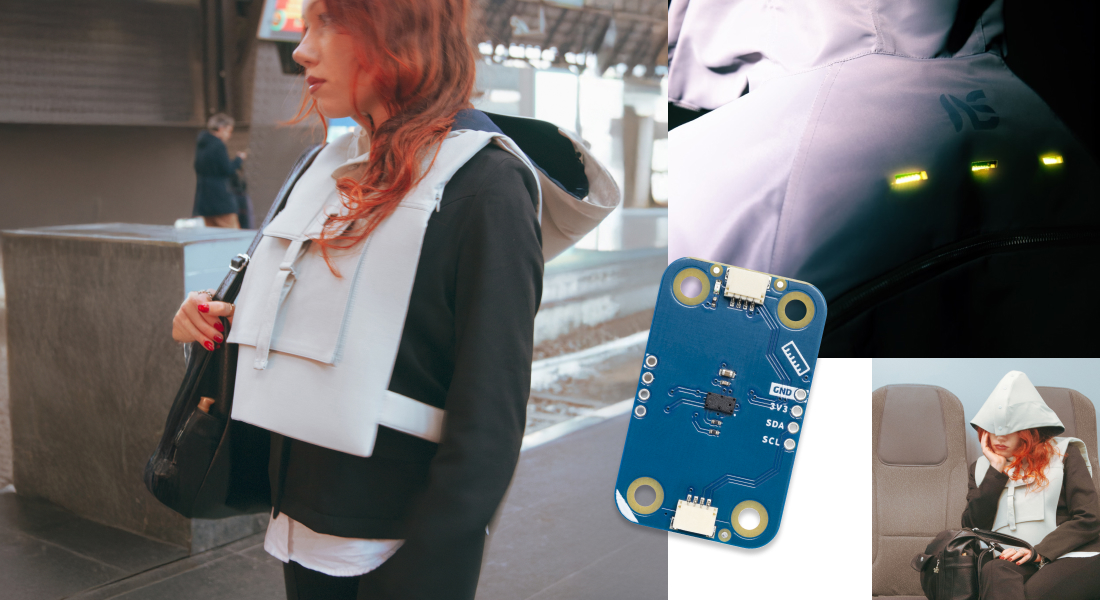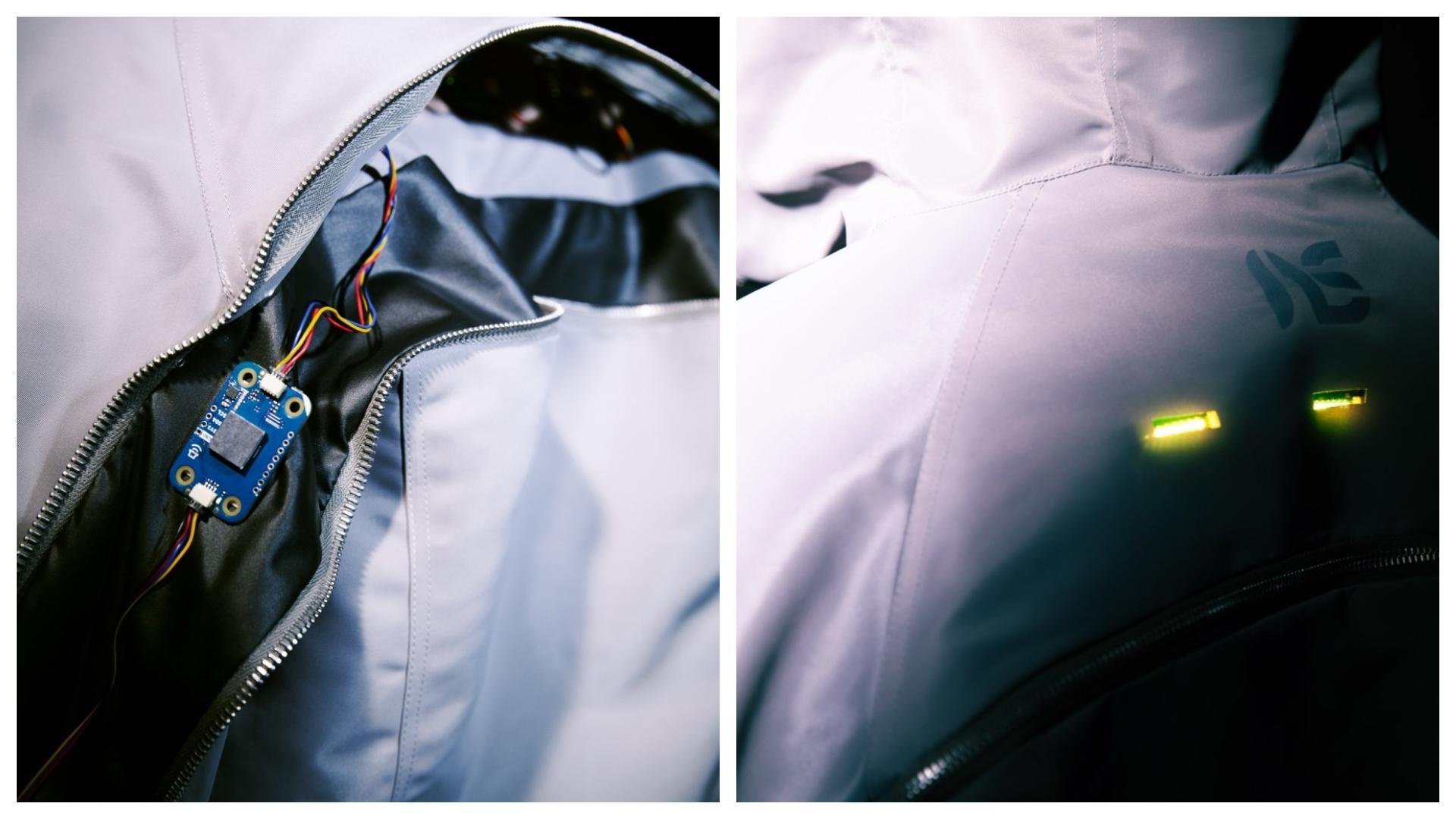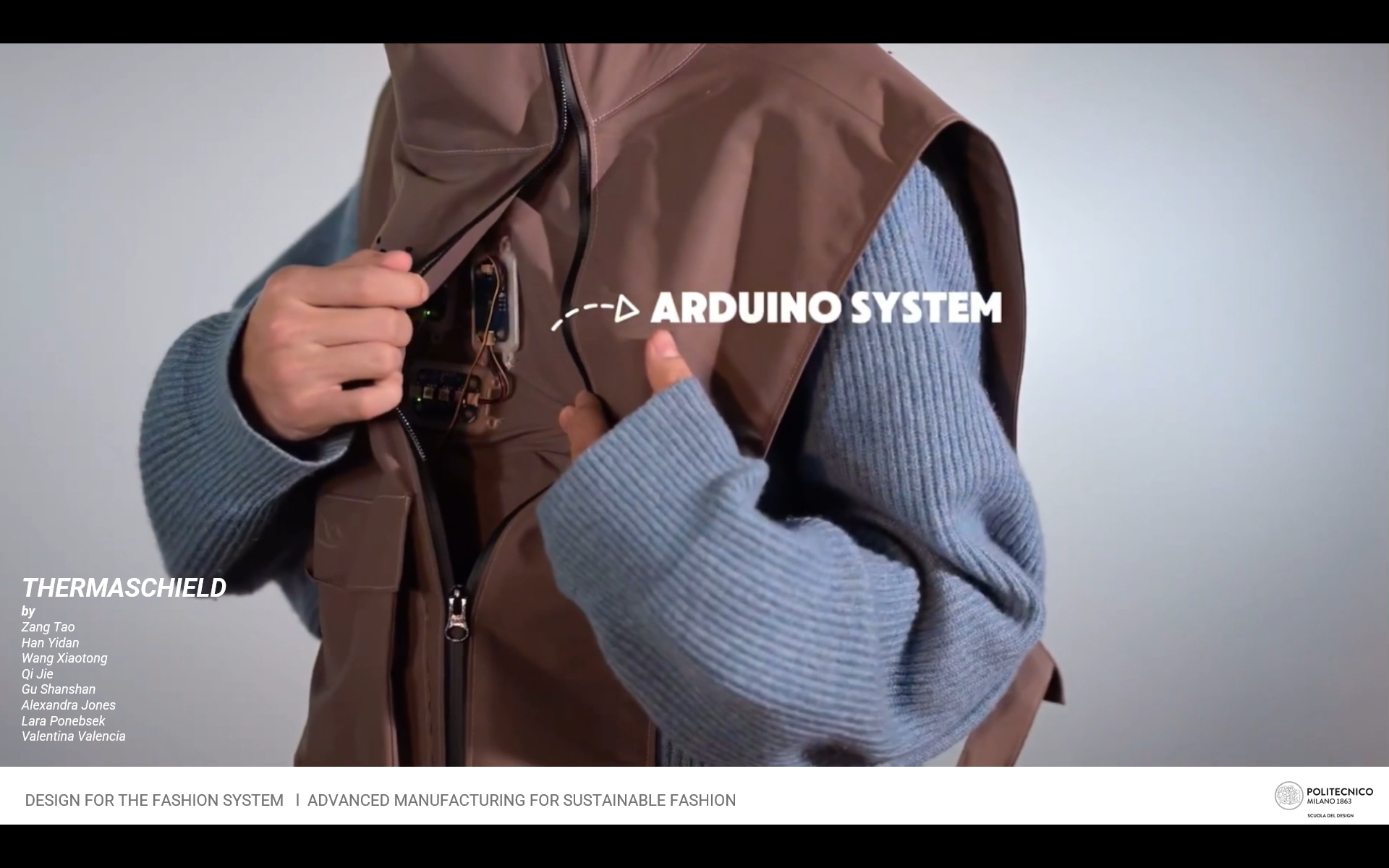Sewing the future: where fashion meets Arduino technology

Last year, Arduino teamed up with the Politecnico di Milano – School of Design, Design for the Fashion System, where professors and students are reimagining fashion by weaving cutting-edge technology into their classroom.
In January, we had the pleasure of showcasing one of these inventive projects at BETT UK 2025, one of the largest EdTech exhibitions. The spotlight was on Urban Nap, an exploration of design, technology, and urban well-being – just one of the many boundary-pushing projects to emerge from this collaboration.
Introducing “Urban Nap”: smart textiles and the rise of wearable security
“Urban Nap” emerged from Advanced Manufacturing for Sustainable Fashion, a one-month intensive module at the Politecnico di Milano – School of Design, led by Daria Casciani, Assistant Professor at Politecnico di Milano, and Mattia Ciurnelli, Founder of SuperForma.
Bringing together 3D printing, laser cutting, Arduino hardware, coding, and digital fabrication, the course reimagines the intersection of technology and fashion, transforming not only how garments are designed but also how they are prototyped and produced. By challenging conventional methods, students explore new frontiers in smart, sustainable fashion.
In this creative incubator, students aren’t just sketching ideas on paper – they’re observing real life, deciphering human behavior, and applying technology in ways that feel almost intuitive. The result? Designs that aren’t just wearable, but intelligent, responsive, and deeply attuned to the world around us.
The “Urban Nap” concept features a vest equipped with Arduino Modulino® sensors and actuators, which are designed to prevent theft attempts when the wearer is sleeping during their commute. If the sensors detect an intrusion, they trigger an alarm. This smart system not only safeguards the wearer’s belongings but also provides peace of mind – making relaxation on the go safer than ever.
Urban Nap is the brainchild of students Ginevra Corso, Mirko di Micco, Marco Fiore, Tianjao Fu, Yijing Gong, Vittoria Greselin, Denise Paleari, and Yanfeng Shen.
Stories behind the design projects
During Arduino Days 2025, Daria and Mattia introduced us the whole procedure of the lessons and more innovative projects created by by students.
The Arduino Product and User Experience team recently also sat down with Mattia Ciurnelli, to learn more about how fashion students are integrating technology into their project prototypes.
Q. The user testing lasted for a couple of months. What were the results, and how did students overcome their lack of technical knowledge, especially in programming?
A. Our students have a fashion design background, but they still found Arduino technology user-friendly. Thanks to the wealth of accessible documentation online, they were able to quickly prototype their ideas. The hands-on, practical approach made learning electronics and coding less intimidating. A key improvement this year was the ability to easily connect the sensors and actuators with the microcontroller, which had been a challenge in previous courses. Arduino Modulino® modular design made the prototyping and testing smoother for students.

Q. So, you’ve used other microcontrollers in your classroom before. How does this one compare, especially in terms of cable management and hardware stability?
A. The modularity of the Arduino sensors and its stable hardware were key improvements. The specific libraries and clear documentation helped students to succeed earlier in the iterative process of trial and error toward more reliable final prototypes.

Q. What were the main challenges during the project development?
A. A major challenge was students’ limited experience with 3D design and printing, as their focus was fashion design. The modular Arduino layout required more time to understand how to properly integrate it into garments. Additionally, a wider library of available sensors for functionalities related to wearable garments, such as touch or heartbeat sensors, would have improved user interaction with the prototypes.
Q. How did MicroPython perform in your course, and was it a good choice for students?
A. As the students participating in the module did not have a background in programming, any programming language could have been a good start for them. In addition, the libraries and documentation, together with the support of teaching staff and ChatGPT, were used to help them learn the basic programming and modify the codes based on their projects' needs.
Other notable projects from the course
Urban Nap is just one of the many groundbreaking prototypes developed in the Advanced Manufacturing for Sustainable Fashion course. The selected prototypes will be showcased during the Open Day at Politecnico Milano Campus Leonardo on March 29, and at Milan Design Week at Campus Bovisa and the fabbrica del vapor from April 7 to April 13. Don’t forget to stop by and check them out!